- Home
- Uganda
-
-
- Gorilla Trekking Safaris
- 15 Day Gorilla and Chimps Trekking – Big 5 and Nature Sighting Safari
- 10 Day Uganda Wildlife and Primate Safari
- 8 Day Gorillas – Chimps and Big Five Experience
- 7 Days Murchison Falls – Chimpanzee & Gorilla Trekking Safari
- 6 Day Gorilla Trekking and Queen Elizabeth
- 6 Day Gorillas and Lake Mburo Safari
- 5 Day Gorillas and White Water Rafting Safari
- 3 Day Uganda Fly to Bwindi Gorilla Safari
- 3 Days Gorilla Trekking and Batwa Trail experience in Bwindi
- 3 Day Gorillas and Lake Bunyonyi Safari
- Gorilla Trekking Safaris
-
- Wildlife Safaris
- 22 Days Best of Uganda Wilderness Adventure
- 18-Day Exploring Uganda Safari
- 15 Day Uganda – Kenya and Tanzania Safari Holiday
- 14 Day Uganda-Rwanda Wildlife & Primate Safari
- 14 Days Uganda & Kenya Wildlife Safari
- 12 Day Mountain Rwenzori Trekking and Wildlife
- 11 Day Uganda Safari Classic Tour
- 10 Day Best of Uganda Safari
- 7 Day Sipi Falls and Kidepo Valley National Park
- 4 Day Kibale Forest Chimpanzee Tracking
- 3 Day Murchison Falls Vacation Including Big 5 Sighting
- 3 Days Queen Elizabeth Wildlife Safari
- 2 Days White Water Rafting In Jinja
- Wildlife Safaris
-
- Birding & Fishing Tours
- 21 Days Birding Uganda and Gorilla Trekking Safari
- 18 Days Birding Tour with Gorilla Trekking
- 15 Days Uganda Birding Safari
- 10 Day Uganda Fishing Safari with a Boat Cruise Experience
- 10 Day Birding Uganda and Game Drives
- 4 Day Murchison Falls Fishing Safari
- 3 Day Mabamba Shoebill and Botanical Gardens Safari
- Birding & Fishing Tours
-
-
- Rwanda
-
- Kenya
-
- Tanzania
-
-
- Long Safaris
- 15 Day Uganda – Kenya and Tanzania Safari Holiday
- 14-Day Tanzania Wildlife Safari & Pangani Beach Holiday
- 10-Day Safari & Cultural Activity in Kilimanjaro Region
- 9-Day Kilimanjaro Hiking Safari in Tanzania
- 8-Day Honeymoon Package with Zanzibar Experience
- 8-Day Luxurious Tanzania Safari
- 8-Day Tanzania Safari & Beach Holiday
- 6 Day Explore Tanzania Classic Safari
- 6-Day Best of Tanzania Safari Tour
- Long Safaris
-
-
- National Parks
-
-
- Tanzania
- Serengeti National Park
- The Ngorongoro Conservation Area
- Lake Manyara National Park
- Tarangire National Park
- Mount Kilimanjaro National Park
- Arusha National Park
- Gombe National Park
- Ruaha National Park
- Katavi National Park
- Nyerere National Park (Selous)
- Mahale Mountains National Park
- Kitulo National Park
- Mikumi National Park
- Rubondo Island National Park
- Saadani National Park
- Mkomazi National Park
- Udzungwa Mountains National Park
- Tanzania
-
- Blog & Tips
- About Us
- Contact Us
Mountain Rwenzori National Park
Mountain Rwenzori National Park
Mountain Rwenzori National Park, located in the heart of Africa, straddles the border between Uganda and the Democratic Republic of Congo (DRC). It is one of Uganda’s most prized natural treasures and a UNESCO World Heritage Site, attracting adventurers, nature enthusiasts, and researchers from around the globe. The park is named after the Rwenzori Mountains, also known as the “Mountains of the Moon,” which are a series of snow-capped peaks that soar to extraordinary heights.
Mountain Rwenzori is located in south western part of Uganda just on the border of democratic republic of Congo. This mountain is also just located near Kibale National Park, and Queen Elizabeth National Park. It also covers over a length of 71 miles on the border. This mountain has got a lot glaciers, snow, and ice around its peak which has attracted a number of people.
Mountain Rwenzori National Park Overview
Mountain Rwenzoris are so far the highest mountain ranges in Uganda. Margherita peak of 5109m is the highest point located within the mountain ranges. Alternatively, we also have Mountain Stanley. Mountain Rwenzori has got over 3 notable peaks and these include: Mountain Baker (4,842m), Weismman’s peak and lastly Mountain Speke (4,890m).
Mt Rwenzori National Park gets her name from a prominent feature in the Albertine rift valley region; the block Mountain Rwenzori worldly known as –the Mountains of the Moon. She lies on western side of Uganda forming the border boundary with DR Congo a few kilometers from the Equator line. Top of the Rwenzori; Margherita at 5109m is the third highest in Africa and known world over for permanent snow despite being in African tropics known for hot temperatures.
Mountain Rwenzori National Park.
The steep and rugged sides of the mountain have vegetation of all stages starting with savannah grassland on the floor of the rift valley generating into grassland woodland, moorland, bamboo and rich and moist alpine forest. This is a habitat for lots of mammal, birds, reptile, insects and other species though because of the steep and rugged terrain it is often hard to see mammals save for monkeys atop trees by the trail system. For this reason, the safaris into Rwenzori Mountains are ideal for the adventure travellers seeking to do hiking, nature walks, mountaineering and sightseeing rather than for travellers in search of big herds of mammals roaming anywhere anyhow.
Key features and highlights of Mountain Rwenzori National Park:
Breathtaking Landscape:
The park’s primary attraction is the Rwenzori mountain range, which stretches for approximately 120 kilometers (75 miles). The mountains are characterized by rugged peaks, deep valleys, glacial lakes, and dramatic cliffs. This diverse landscape has earned Rwenzori the nickname “Africa’s Alps.”
Margherita Peak:
The highest point in the Rwenzori range is Margherita Peak, which stands at a staggering 5,109 meters (16,763 feet) above sea level. This peak is one of the most challenging and sought-after climbing destinations on the continent. Scaling Margherita Peak requires mountaineering skills and a multi-day expedition.
Glaciers and Equatorial Snow:
The Rwenzori Mountains are one of the few places near the equator where glaciers and snow can be found year-round. These glaciers are remnants of a much larger ice cap that covered the range thousands of years ago, adding to the park’s unique and awe-inspiring characteristics.
Flora and Fauna:
The park is home to a wide array of plant and animal species, many of which are endemic to the region. The lower slopes are covered in dense tropical rainforests with an abundance of plant life, including giant heathers, lobelias, and tree ferns. As the altitude increases, the vegetation changes, and heath and moorland dominate the landscape.
Wildlife: – Mountain Rwenzori National Park
The Rwenzori Mountains provide a habitat for several rare and elusive animal species. Some of the notable inhabitants include the Rwenzori duiker, Rwenzori colobus monkeys, three-horned chameleons, and various bird species such as the Rwenzori turaco and Rwenzori batis. Additionally, the park serves as a vital corridor for large mammals, such as elephants and chimpanzees, between Uganda and the DRC.
Cultural Significance:
The Rwenzori region has long been home to various indigenous communities, including the Bakonzo people. These local communities have deep cultural connections to the mountains and consider them sacred. Many guided treks in the park provide opportunities to interact with and learn from these local communities, enriching the visitor experience.
Hiking and Trekking:
For visitors seeking a memorable adventure, Mountain Rwenzori National Park offers various trekking options catering to different levels of fitness and expertise. The most popular trek is the Rwenzori Mountains trek, which typically takes around 6 to 9 days to complete. During the trek, visitors can witness breathtaking landscapes, stunning waterfalls, and vibrant flora.
Mountaineering: – Mountain Rwenzori National Park
As mentioned earlier, Margherita Peak is a significant challenge for experienced mountaineers. Climbers must navigate through steep terrain, snow and ice, and adverse weather conditions. Mountaineering in the Rwenzori Mountains is a rewarding but demanding experience, requiring proper equipment, preparation, and the guidance of experienced guides.
Conservation Efforts:
Mountain Rwenzori National Park plays a crucial role in preserving and protecting its unique ecosystem. The park faces challenges from climate change, deforestation, and illegal activities. Conservation efforts, community involvement, and responsible tourism practices are vital to ensuring the park’s sustainability and safeguarding its biodiversity for future generations.
Accessibility:
The main access point to Mountain Rwenzori National Park is through the town of Kasese in western Uganda. Kasese is approximately 410 kilometers (255 miles) from Kampala, Uganda’s capital. There are several trekking companies that organize guided tours and expeditions to the park, providing essential logistical support and experienced guides for a safe and memorable adventure.
Activities to do at Rwenzori Mountain National Park
Hiking and Mountaineering:
The park is famous for its challenging hiking and mountaineering opportunities. Experienced climbers can attempt to reach the highest peaks of the Rwenzori Mountains, including Mount Stanley, which has several summits over 4,500 meters (14,764 feet) in elevation.
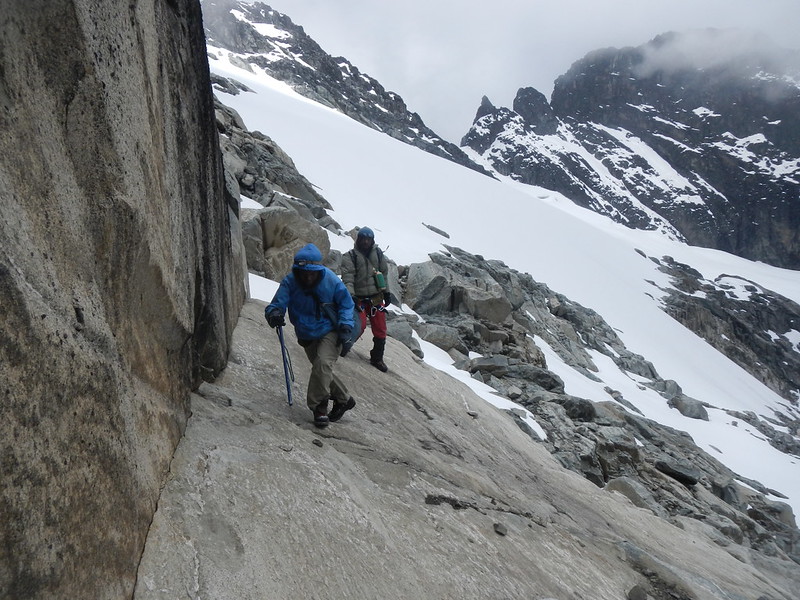
The park is famous for its challenging trekking routes, particularly to the legendary “Mountains of the Moon,” which is the third-highest mountain range in Africa. The most popular trail is the Rwenzori Mountains trek, which takes several days and offers breathtaking views of the surrounding scenery.
For experienced mountaineers, climbing the Margherita Peak (5,109 meters), the highest peak in the Rwenzori Mountains, is an unforgettable adventure. It requires technical climbing skills and proper equipment.
Nature Walks and Bird Watching:
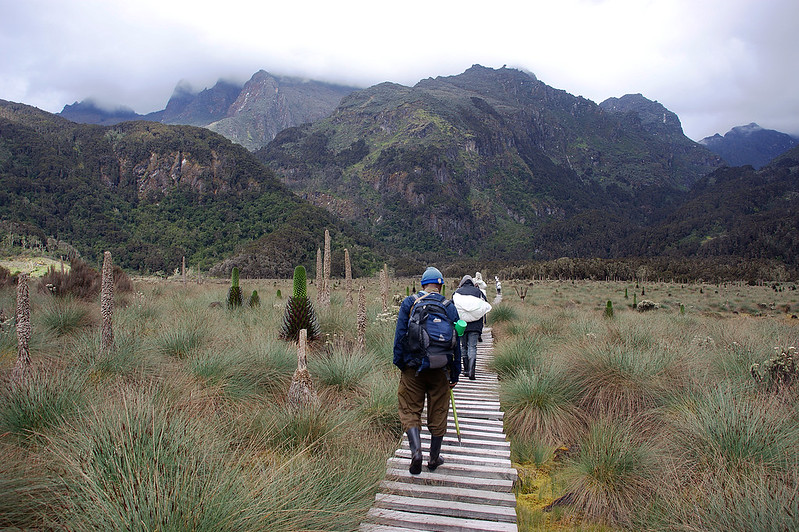
Guided nature walks are available for those who want to explore the lower slopes of the mountains and discover the park’s unique flora and fauna. The park is home to various bird species, including the Rwenzori turaco and the handsome francolin, making it a great spot for bird-watching enthusiasts.
Cultural Tours: – Mountain Rwenzori National Park
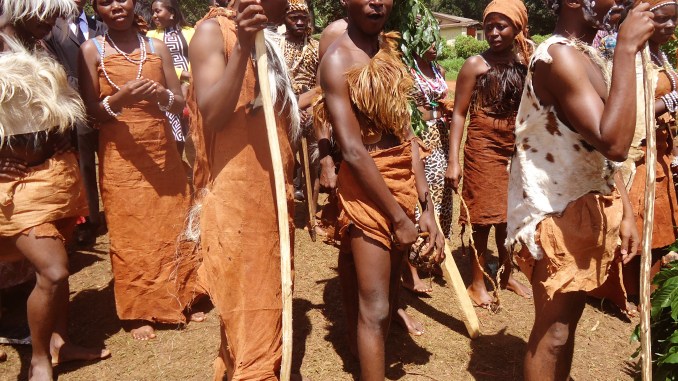
The local communities around the park have unique cultural practices and traditions. Tourists can take cultural tours to learn about the local people, their way of life, and traditional practices. By cultural encounters; you can also engage in cultural experiences by visiting nearby communities and learning about the local Bakonzo people’s way of life and traditions. The Bakonzo are the primary dominants of Rwenzori region mostly in Kasese District.
Lakes & River Adventures:
The park is crisscrossed by several rivers, lakes and streams. Adventurers can enjoy activities like rafting, kayaking, or simply relaxing by the riverside.
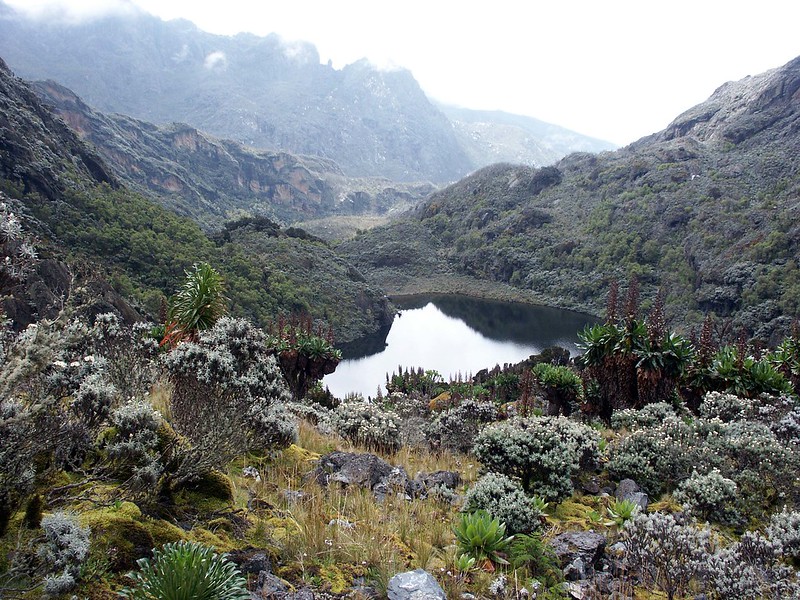
Wildlife Watching:
Though the primary focus of the park is on the mountains, some wildlife can also be spotted in the lower slopes and forests. Keep an eye out for species such as Rwenzori duiker, chimpanzees, and various monkey species.
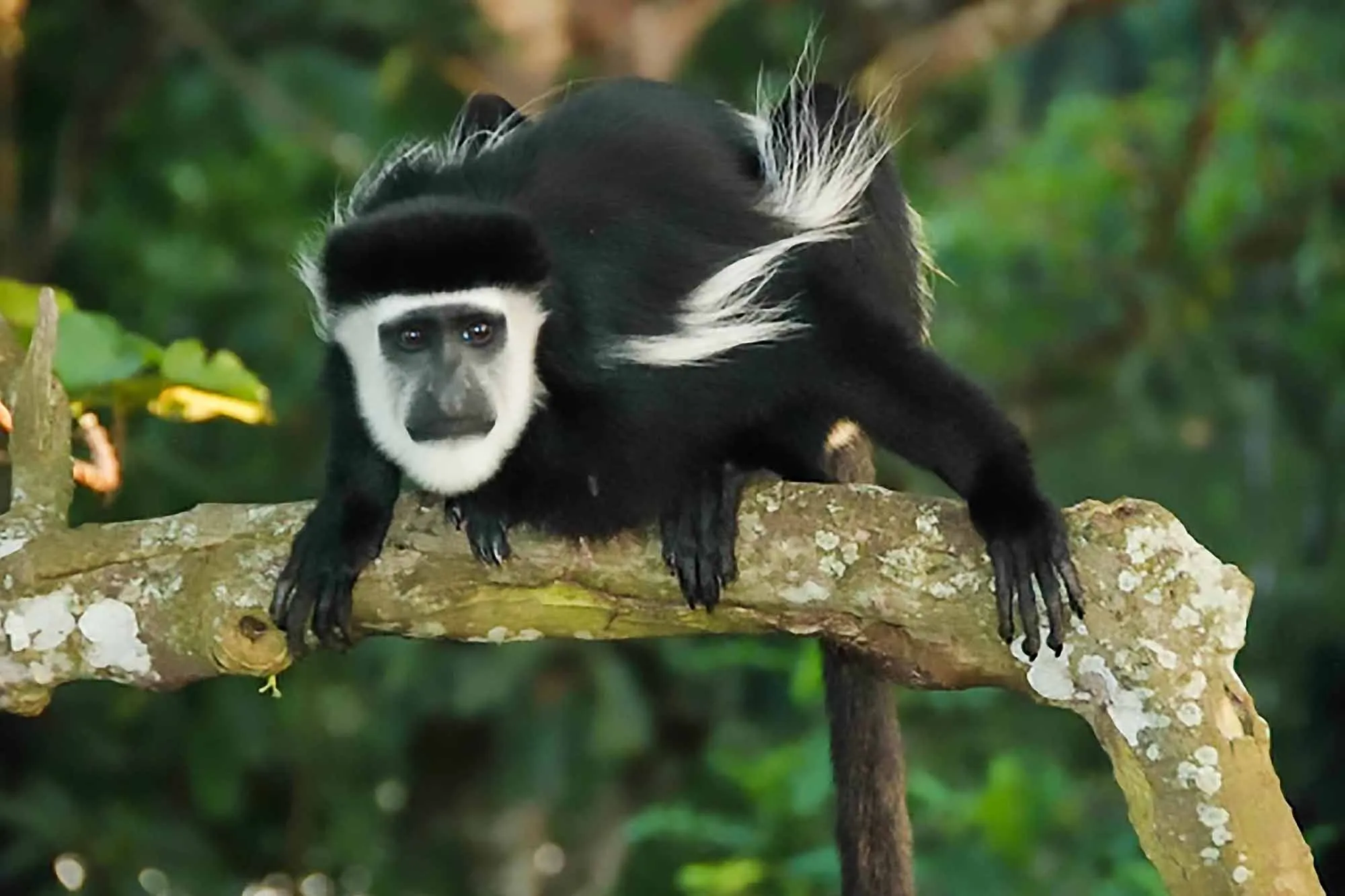
Camping and Picnicking: – Mountain Rwenzori National Park
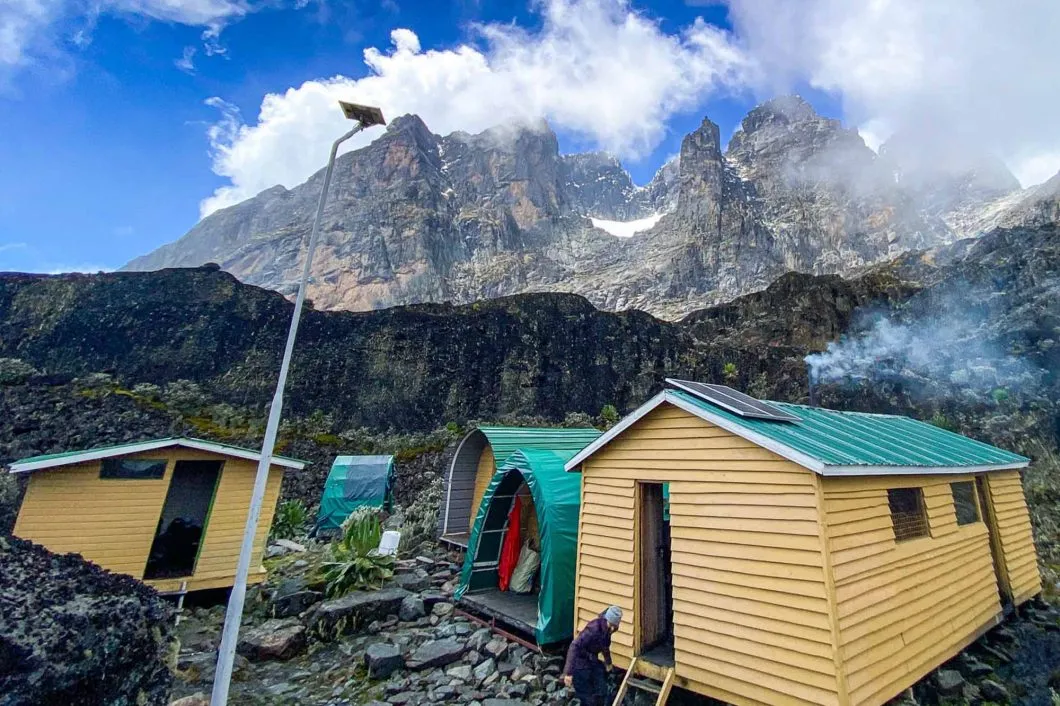
There are designated camping areas and picnicking spots within the park where visitors can spend the night or have a pleasant day outdoors.
It’s important to note that Rwenzori Mountain National Park is a challenging destination, and some activities may require physical fitness and acclimatization to higher altitudes. Proper preparation and guidance from experienced guides are essential for a safe and enjoyable visit. Before planning a trip, it’s advisable to check for any updates or changes to the park’s activities and regulations.
When to Visit Rwenzori Mountains National Park.
The best time to visit the park largely depends on your preferences and interests
Dry Season (December to February, June to August):
The dry season is generally considered the best time to visit Rwenzori Mountains National Park. During this period, the weather is more predictable, with less rainfall and clearer skies. The trails are easier to navigate, and you’ll have better chances of enjoying panoramic views of the mountains. Wildlife sightings are also more common during this time as animals congregate around water sources.
Wet Season (March to May, September to November):
The wet season brings heavy rainfall to the region, which can make trekking and hiking more challenging. The trails may be slippery, and some areas could be inaccessible due to flooding. However, the wet season has its own charm with lush greenery and blooming flowers, making it an excellent time for photographers and nature enthusiasts.
Trekking Considerations:
If you are planning to undertake a trek to the highest peaks of the Rwenzori Mountains, such as Mount Stanley or Margherita Peak, it is advisable to avoid the peak of the wet seasons (April/May and October/November). Treks can be dangerous and more demanding during these months due to adverse weather conditions and potential trail closures.
Crowd Considerations:
Rwenzori Mountains National Park is not as heavily visited as some other popular African destinations. However, during the dry season, especially around December and January, there may be more tourists. If you prefer a quieter experience, consider visiting during the shoulder seasons (March to May or September to November).
In conclusion, the best time to visit Rwenzori Mountains National Park would be during the dry season, which runs from December to February and June to August. However, if you don’t mind the rain and want to experience the lush greenery and blossoming flowers, the wet season can also offer a unique and rewarding experience. Regardless of the season, it is essential to check weather conditions and park accessibility before planning your trip.
Getting to Rwenzori Mountains NP
By Road
From Kampala, you can then take a road trip to Rwenzori Mountains National Park. From Kampala to Kasese. Several Tour Companies operate routes between these two cities, and the journey usually takes around 6-8 hours, depending on road conditions and stops. Kasese to Rwenzori Mountains National Park: Once you arrive in Kasese, you can arrange for transportation to the national park and we advise to always book via a Tour Operator to avoid all these Inconveniences. The park entrance or starting points for various trekking routes are located within a short distance from Kasese.
By Air
You can take a domestic flight from Entebbe International Airport or another major airport in Uganda to Kasese Airport. Kasese is the closest airport to the park and serves as the gateway for many visitors. Kasese to Rwenzori Mountains National Park: Once you arrive in Kasese, you can arrange for transportation to the national park and we advise to always book via a Tour Operator to avoid all these Inconveniences. The park entrance or starting points for various trekking routes are located within a short distance from Kasese.
Conservation Measures and Challenges at Rwenzori Mountains NP
Conservation Measures
- Protected Area Status: The Park’s designation as a protected area ensures legal protection against activities like deforestation, illegal hunting, and land degradation.
- Park Management: The Uganda Wildlife Authority (UWA) oversees the park’s management, implementing conservation strategies and monitoring wildlife populations.
- Biodiversity Monitoring: Regular monitoring of flora and fauna helps assess the health of ecosystems and identify threats to species.
- Anti-Poaching Efforts: Increased ranger patrols and community involvement help combat illegal hunting and protect wildlife.
- Habitat Restoration: Efforts to rehabilitate degraded areas through reforestation and invasive species control help restore habitats.
- Community Involvement: Engaging local communities in conservation efforts through eco-tourism and alternative livelihood programs fosters support for park protection.
- Sustainable Tourism: Promoting eco-friendly and responsible tourism practices helps minimize environmental impact and supports conservation initiatives.
- Research and Education: Scientific research contributes to better understanding the park’s ecosystems, and education programs raise awareness about conservation.
Challenges Facing Rwenzori Mountains National Park Conservation:
- Deforestation and Land Use: The Park faces threats from deforestation for timber, agriculture, and settlement expansion, which lead to habitat loss and fragmentation.
- Illegal Hunting and Wildlife Trafficking: Poaching poses a significant threat to wildlife, especially endangered species like the Rwenzori duiker and chimpanzees.
- Climate Change: Global warming impacts the park’s glaciers, vegetation, and wildlife, leading to changes in habitat and potential loss of endemic species.
- Limited Resources: Insufficient funding and resources hinder effective conservation efforts and management.
- Political Instability: Political unrest in the region can disrupt conservation activities and lead to increased poaching and illegal activities.
- Community Livelihoods: Poverty and limited alternative income sources can drive communities to engage in illegal activities like poaching or encroachment.
- Tourism Pressure: While tourism is crucial for funding conservation efforts, an increase in visitors can strain park resources and disturb wildlife.
- Inadequate Law Enforcement: Weak law enforcement can hamper efforts to combat illegal activities within the park.
Addressing these challenges requires collaborative efforts among the Uganda Wildlife Authority, local communities, non-governmental organizations, and international partners. Sustainable development initiatives, community engagement, and stricter law enforcement are vital to ensure the long-term protection and preservation of Rwenzori Mountains National Park and its unique biodiversity.
Accommodation at Rwenzori Mountains NP
Rwenzori Mountains National Park offers various accommodation options to suit different preferences and budgets.
Rwenzori Trekking Services (RTS) Huts.
Inside the park, there are several mountain huts operated by Rwenzori Trekking Services. These huts are strategically located along the trekking routes and provide basic facilities such as beds, cooking areas, and shared bathrooms. They are primarily used by trekkers and mountaineers during multi-day expeditions.
Camping
Camping is a popular option for trekkers and adventurers. There are designated camping sites along the trekking routes where you can pitch your tents. Camping allows you to experience the wilderness up close and enjoy the natural surroundings.
Equator Snow Lodge
Located near the park’s entrance in Kilembe, Equator Snow Lodge is a comfortable and more luxurious option for visitors. The lodge offers well-appointed rooms, a restaurant, and stunning views of the Rwenzori Mountains.
Ruboni Community Camp.
Situated in the nearby village of Ruboni, Ruboni Community Camp is a community-run lodge that offers comfortable cottages and budget-friendly rooms. It’s a great option for those looking for an authentic experience and supporting local initiatives.
Trekkers Hostel.
Located in Kasese town, the Trekkers Hostel is an affordable option for travelers. It provides basic accommodation and serves as a starting point for treks into the Rwenzori Mountains.
Other Lodges and Guesthouses.
There are several other lodges and guesthouses in Kasese town and its surroundings, offering various levels of comfort and amenities.
When planning your stay in Rwenzori Mountains National Park, consider the type of experience you want, your budget, and the specific activities you wish to undertake. It’s essential to book your accommodation in advance, especially during peak trekking seasons, to ensure availability. Additionally, verify the current status and services of each accommodation option as it may change over time.
Geography and Geology of Rwenzori Mountains NP
Rwenzori Mountains National Park is a UNESCO World Heritage Site located in western Uganda. It covers an area of approximately 996 square kilometers and is known for its stunning landscapes, diverse ecosystems, and unique geological features. Here’s an overview of the geography and geology of the Rwenzori Mountains National Park:
Geography:
- Location: The Park is situated on the border between Uganda and the Democratic Republic of Congo (DRC). It lies in the western part of Uganda, near the town of Kasese.
- Mountain Range: The park is home to the Rwenzori Mountains, also known as the “Mountains of the Moon.” This mountain range is one of Africa’s highest and contains several peaks, the highest being Mount Stanley, with its highest point being Margherita Peak at 5,109 meters (16,762 feet) above sea level. These peaks are covered in snow and glaciers, making them an exceptional sight in the equatorial region.
Geology: – Mountain Rwenzori National Park
- Formation: The Rwenzori Mountains were formed as a result of tectonic movements in the East African Rift system. The region underwent significant geological activity, with the rifting process leading to the creation of deep valleys and steep escarpments.
- Glacier Formation: The high altitude and the equatorial location of the Rwenzori Mountains contribute to the unique occurrence of glaciers. These glaciers are some of the few remaining in Africa, although they have been shrinking due to climate change in recent decades.
Ecosystems
- Biodiversity: Rwenzori Mountains National Park is renowned for its rich biodiversity. It is home to various ecosystems, including montane forests, bamboo forests, heath, and alpine zones. The diverse habitats support a wide range of plant and animal species, many of which are endemic to the region.
- Flora: The Park boasts an impressive array of plant species, with many rare and endemic varieties. The vegetation changes with altitude, with lower elevations featuring lush forests, and higher elevations characterized by alpine vegetation and giant lobelias.
- Fauna: The Park is inhabited by diverse wildlife, such as elephants, chimpanzees, various monkey species, antelopes, and more than 200 bird species. The Rwenzori Mountains also serve as a vital habitat for the elusive Rwenzori turaco and Rwenzori batis, both of which are endemic bird species.
Conservation: – Mountain Rwenzori National Park
- UNESCO World Heritage Site: Rwenzori Mountains National Park was designated as a UNESCO World Heritage Site in 1994 in recognition of its exceptional natural beauty and ecological significance.
- Threats: The Park faces challenges such as deforestation, illegal poaching, and climate change impacts on the glaciers. Conservation efforts are ongoing to preserve this unique and valuable natural treasure.
Visiting the Rwenzori Mountains National Park offers a chance to explore one of Africa’s most remarkable mountain ranges, experience diverse ecosystems, a
What to Pack for Rwenzori Mountains NP.
Packing for a trip to Rwenzori Mountains National Park requires careful consideration due to the unique and challenging environment of the region. The Rwenzori Mountains are known for their high altitudes, varying weather conditions, and rugged terrain. Here’s a comprehensive list of items to pack for your trip:
Clothing:
- Layered Clothing: Pack moisture-wicking base layers, insulating mid-layers, and waterproof outer layers to adapt to changing weather conditions.
- Waterproof Jacket: A good quality waterproof and windproof jacket is essential to protect against rain and cold winds.
- Warm Clothing: Fleece jackets, thermal pants, and warm socks are necessary for the colder temperatures at higher altitudes.
- Hiking Pants: Lightweight, durable, and quick-drying hiking pants are recommended.
- Hiking Shorts: If you plan to hike in warmer weather, bring comfortable hiking shorts.
- Gloves and Hat: Insulated gloves and a warm hat for protecting your extremities from the cold.
- Sturdy Hiking Boots: Waterproof, ankle-supporting hiking boots with good traction are a must for the rugged terrain.
- Hiking Socks: Bring moisture-wicking socks to keep your feet dry and prevent blisters.
- Gaiters: Gaiters help keep debris out of your shoes and protect your lower legs from rain and mud.
- Sandals or Camp Shoes: Light footwear to wear around the campsite.
Gear and Equipment:
- Backpack: A comfortable, well-fitting backpack with sufficient capacity for your gear.
- Sleeping Bag: A high-quality sleeping bag rated for cold temperatures.
- Sleeping Pad: An insulated sleeping pad for added comfort and insulation from the cold ground.
- Trekking Poles: Useful for maintaining balance and reducing strain on your knees during steep descents and ascents.
- Headlamp: Essential for navigating in low-light conditions, especially during early morning hikes or late-night bathroom trips.
- Water Bottles/Hydration System: Carry enough water to stay hydrated during hikes.
- Sunglasses: UV-blocking sunglasses to protect your eyes from intense sunlight at higher altitudes.
- Sunscreen and Lip Balm: High-altitude sun exposure can be intense; pack a high SPF sunscreen and lip balm.
- Insect Repellent: Keep insects at bay, especially in the lower elevations.
- Personal First Aid Kit: Include basic medications, bandages, blister treatment, and any personal medications you might need.
- Camera and Binoculars: Capture the stunning landscapes and wildlife.
- Portable Charger: Keep your devices powered, especially if you’re relying on them for navigation.
Miscellaneous:
- Travel Documents: Passport, permits, travel insurance, and any necessary permits for entering the park.
- Cash: Local currency for small purchases and tips.
- Toiletries: Toothbrush, toothpaste, biodegradable soap, hand sanitizer, and other personal hygiene items.
- Packable Daypack: Useful for shorter hikes away from your base camp.
- Notebook and Pen: Journaling or sketching the beautiful scenery.
- Snacks: Energy bars, nuts, and dried fruits for quick energy during hikes.
Remember that the weather in the Rwenzori Mountains can be unpredictable, so it’s essential to be prepared for a wide range of conditions. Additionally, consider the duration of your trip and the specific activities you plan to engage in when deciding how much to pack.
Remarks on Rwenzori Mountain National Park.
Visiting Mountain Rwenzori National Park is a unique opportunity to explore an untouched and breathtaking mountain range that stands as a testament to the natural wonders of Africa; Whether trekking through the lower slopes or summiting Margherita Peak, the experience is sure to leave visitors with lasting memories of this remarkable and majestic wilderness.

